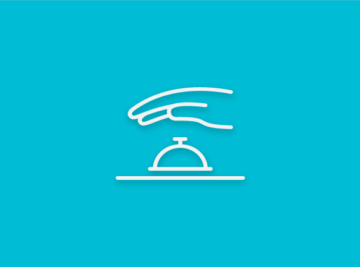Email marketing is one of the most commonly used tactics for marketers across all industries. That’s one of the many reasons why promoting a blog through email outreach is a great way to increase traffic to a blog page and build leads. There are, however, a few important tips to remember.
-
Any email marketing strategy must start with a frictionless CRM if you’re going to stick with it. We recommend using HubSpot.
-
Understanding your audience is one of the most important factors for success.
-
Organizing an email marketing strategy using an editorial calendar is one of the best ways to keep your organization on the same page.
Email marketing is simply a digital marketing strategy that utilizes email to sell or promote a product or service to customers and prospects, or to otherwise influence their decision-making process. When it comes to Inbound Marketing, email marketing is one of the many tools marketers can use to connect with prospects and guide them along their buyer’s journey.
But while promoting a product or service by email might come as second-nature to many businesses, few leverage email marketing to promote their blog (or other content). But the truth is, so long as your blog provides value to your customers, your blog is a product just like everything else that you offer. You might not charge money for it, but that doesn’t change the fact. In order for your blog to be successful, you’ve got to promote it just like you would any other product or service.
Using Email Marketing to Promote a Blog
Whereas outbound marketing might focus on using a “cold” approach to email marketing, this article focuses on tips and strategies within the inbound marketing methodology, where blog promotion is used to help prospects by answering the questions they’re asking online.
This means contacts in your email marketing list have taken an action to learn more about the services your organization offers. These actions may include, but certainly are not limited to:
- Clicking on a CTA
- Filling out a form
- Subscribing to your blog
- Engaging with your company on social media
All of these actions can and should be monitored by a CRM, which is the key component to any email marketing strategy. Below, we discuss the importance of incorporating a CRM into your email marketing strategy and list 9 other important tips to remember when promoting a blog through email outreach.
Organize your Blog with our FREE Editorial Calendar Template
10 Email Marketing Tips for Promoting a Blog
1. Pick a CRM for your email marketing efforts.
A CRM, or “Customer Relationship Management” is the engine that should drive your email marketing efforts. Essentially, a CRM provides the database for all relevant information pertaining to your marketing, sales, and outreach efforts. This includes mailing lists and contact information, which is obviously needed to launch an email marketing campaign.
Other information a CRM can gather includes (but certainly isn’t limited to):
- A customer’s industry (important for B2B companies)
- Social media account integration
- Lead status or scoring
- Date of first contact
- And much more
As previously mentioned, we prefer using HubSpot’s CRM because of it’s easy to use interface, powerful tools, and compatibility with other sales and marketing platforms. Check out our list of CRM pros and cons for the most popular platforms to help with your research.
By picking the right CRM, you’ll be able to segment your contacts in a variety of ways so that you deliver the right content to the right people at exactly the right time that will encourage them to take the action you want them to take.
2. Understand your audience.
This tip seems simple enough, but the importance of understanding the needs and challenges of your audience cannot be overstated. Given the core function of the inbound marketing methodology centers around the needs of customers and website visitors, it’s critical to understand what those needs are.
To better understand this concept, reflecting on your buyer personas can be a helpful tactic. That’s because these semi-fictional representations of your ideal prospects can help outline the direction of your blog and the specific topics your content will cover.

3. Nurture leads by segmenting your audience.
Once you understand your audience, it’s important to design your messaging in a way that answers the questions they’re asking. A great way to do this is to break down your audience through segmentation.
That’s because segmenting your audience provides an opportunity for tailored messaging in your emails. And, when using a platform like HubSpot, you can craft customized emails with helpful tools, such as smart modules.
Using smart modules, your messaging can better address the specific needs for each segment of your audience in a seamless, user-friendly way.
You can segment your audience in countless ways. Just a few examples are:
- Segmenting by interest
- Segmenting by challenge
- Segmenting by activity on your website
- Segmenting by likelihood to close

4. Keep your email messaging concise.
It’s no secret that people’s attention spans are shrinking. In fact, recent studies show that the average attention span has steadily decreased to just 8 seconds. When factoring average attention spans into your email marketing strategy, the more concise your message, the better.
In general, emails that use language directing readers to your blog in a transparent, concise way tend to be much more effective than long-winded messages. People are unlikely to invest their limited time into reading a long email promoting a blog, and messaging should reflect that. When in doubt, it’s best to use your messaging to address the specific needs of your audience in a way that entices them to consume a blog to learn more about the solutions and services you offer.
5. Make use of CTAs.
Any inbound marketing strategy will include a CTA (call-to-action). That’s because a well placed CTA can help nurture leads even further through the conversion funnel. For example, a CTA is a great way to present your audience with a “content upgrade”.
To understand where to place your CTAs, think back to your audience research and ask:
- Which challenges are the most important to your audience?
- Do you have blog posts that address those specific problems?
- Can you use a CTA to promote these blogs within an email?
You can also use a CTA to encourage your audience to visit the blog post being promoted within your email as well. Just make sure to keep your language concise and transparent when utilizing CTAs.
6. Personalize your messaging.
With so many companies utilizing email marketing for their outreach efforts, it’s easy for audiences to deprioritize any generic, promotional emails. A great way to avoid this and stand out is by personalizing your messaging.
Most CRMs that include email marketing functionality will allow you to personalize your emails using a variety of personalization tokens. HubSpot is our go-to, and they have a great system for personalizing emails, but other popular CRMs offer such capabilities as well.
In its simplest form, personalization might include using the recipients name in the subject line. But you can (and likely should) pull other information where appropriate as well. Email address, phone number, physical address, and more can all be used to make an email feel as though it were written specifically for the recipient, which increases the likelihood that they will do business with you.

7. Keep a consistent schedule.
Maintaining a consistent schedule for email marketing is important for a few reasons. First, it helps to solidify your audience research. If your audience is more active in the morning, it might be better to send messages during that time when they are willing to be more receptive.
Second, a consistent schedule makes it easier for your team to stay on task for your own outreach efforts. Also, a consistent outreach schedule helps to build rapport with your audience while giving loyal readers something to look forward to each week.
8. Avoid overusing external links.
When it comes to promoting a blog, it’s important to remember your ultimate goal is to drive more traffic to whatever content you’re promoting. Once they’re on your website, you dramatically increase your ability to influence them further toward making a purchase or otherwise engaging with your brand. This means that most, if not all, of the links you include in your email should lead to your own content—not to another website.
Whenever possible, we recommend that you not include external links in your email marketing that would take the recipient to a website other than your own. Where appropriate, you can include those links in the content on your site, but make sure you get the reader to your site first before you give them an escape hatch.
9. Ensure that opt-out messages or unsubscribe links are visible.
Regardless of how good your messaging may be, it’s inevitable that some people will opt-out of receiving emails. And while it may be tempting to remove or place your unsubscribe links in areas that are hard to find, it’s absolutely essential that they’re visible and easy-to-access for readers.
Most notably, the Federal Trade Commission has a clear set of guidelines for businesses using emails in the CAN-SPAM ACT. Failure to comply with these rules could result in harsh penalties. Reference the full Compliance Guide for Businesses here.
Also, aside from the legal requirements, the last thing you want is for your emails to be viewed as spam, or for readers to get annoyed with your messaging. This only devalues your content while increasing the likelihood your organization will receive negative reviews and word of mouth.
Make your opt-out messaging clear and visible. And remember, just because someone opts-out of a marketing email, that does not mean that they’ll never return to your blog or consume your content ever again.
10. Remember one size doesn’t “fit all” with email marketing.
Each organization will vary based on needs, challenges, and goals when it comes to developing a successful outreach strategy. That means your email marketing strategy can, and should include creative formats that showcase your organization’s brand.
Some of these email formats might include:
- A newsletter
- “Stat” of the week
- Employee profile
- Company update
As long as the selected format helps to inform your audience while guiding them to consume your blog, it should be included in your strategy overall.
Optimize your strategy using an editorial calendar.
As you can see, there are several factors to consider when promoting a blog through email marketing. And one of the best ways to incorporate each of these tips into your strategy is to use an editorial calendar.

Pepperland’s Editorial Calendar – Designed to Help Organize and Grow your Content
That’s because an editorial calendar allows for all of your content to exist in one transparent and easily accessible document. And, while transparency is a key benefit for an editorial calendar, it can also be used to :
Simply put, an editorial calendar is a great way to maximize every aspect of your content, especially when it comes to promoting your blog.
Additional Resources:
- What is an Editorial Calendar? [And Why you Need One]
- How to Create an Editorial Calendar
- Editorial Calendar Templates [5 Examples + FREE Download]
Need help getting started? Download our free template!
Given the importance of an editorial calendar, it can be a bit overwhelming to create an effective calendar that best serves your organization and content marketing strategy.
Download our free editorial calendar template to maximize your email marketing strategy and grow traffic to your blog!









